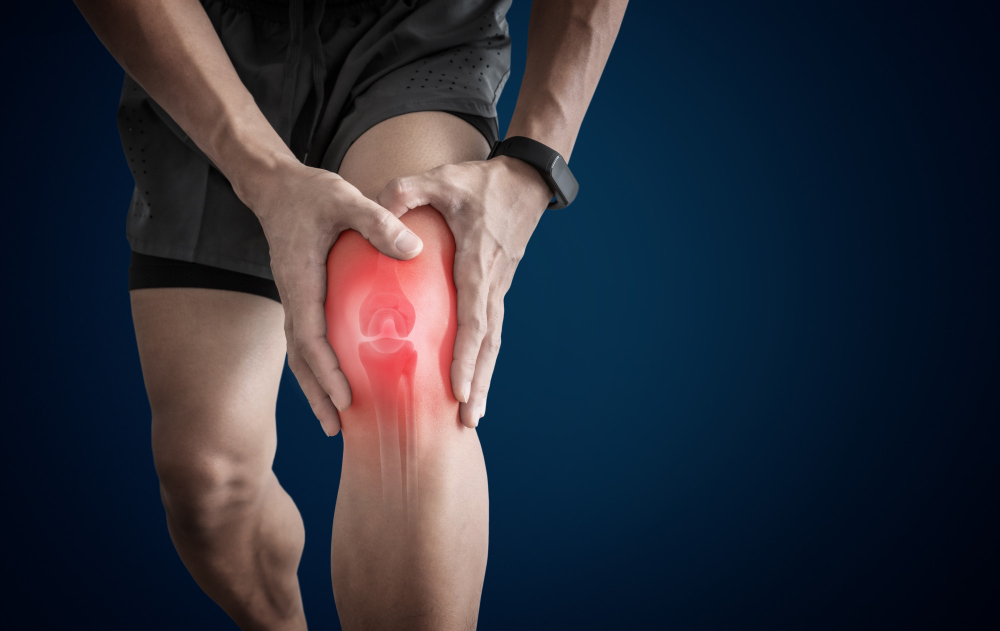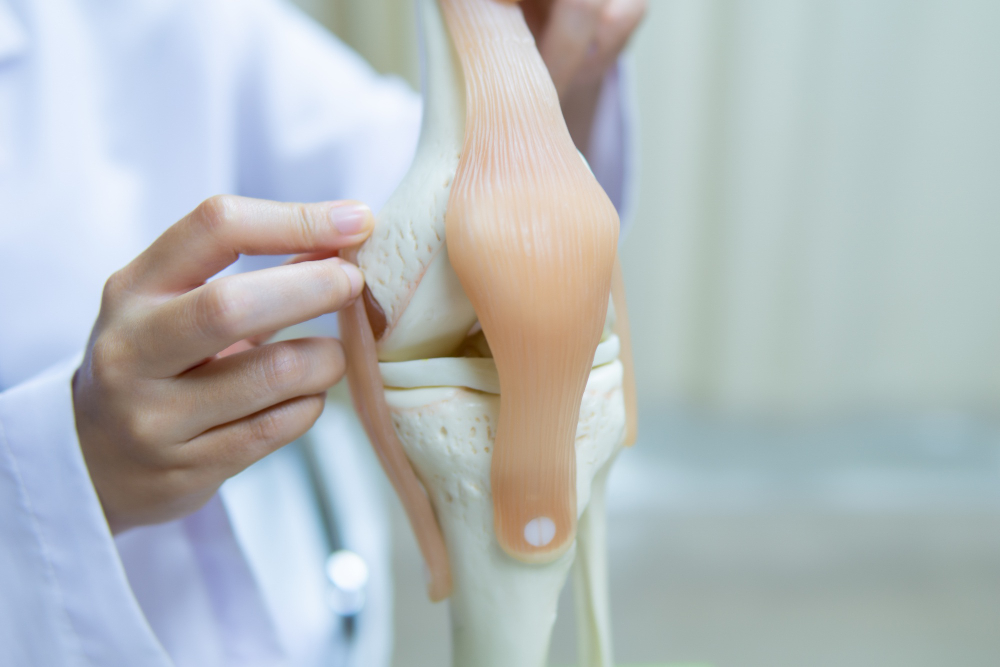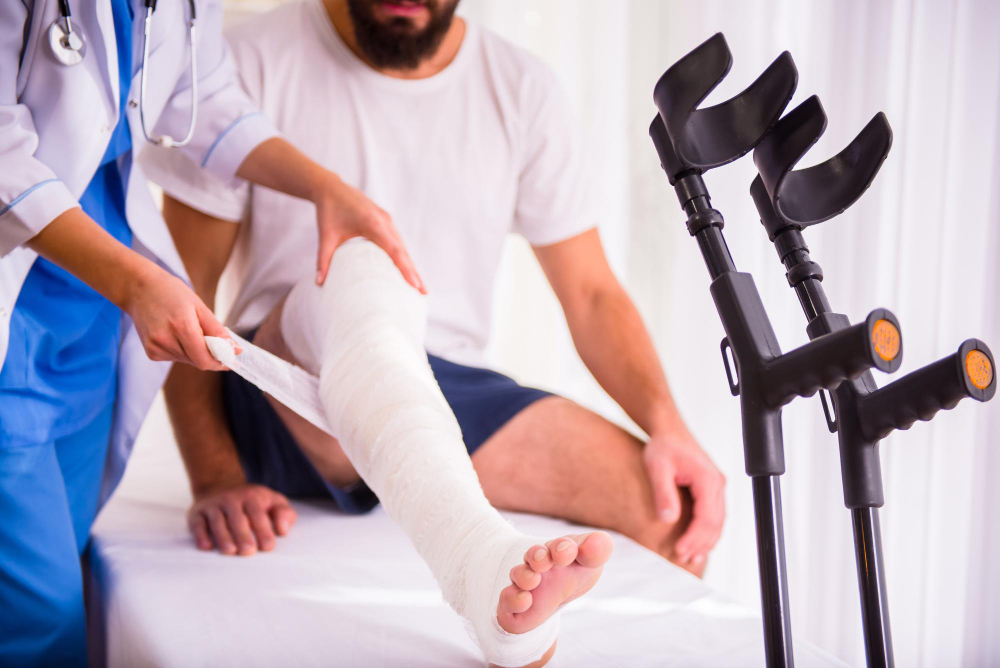Knee ligament surgery
The Knee ligament is composed of flexible connective tissue bands known as ligaments, which are responsible for holding the knee bones in place.
Injuries to the ligaments in the knee can occur due to various events, such as car accidents, falls, sports-related incidents like football tackles or sudden movements while skiing. The most frequently treated injury by our experts is damage to the anterior cruciate ligament (ACL) in the knee, but we are able to repair all four ligaments in the knee.

What are knee ligaments?
In the knee, there exist four crucial ligaments that link bones to one another and grant stability and force to the joint. These ligaments are made up of pliable tissue bands and specifically tie the femur (thigh bone) to the tibia (shin bone).
- The ACL is found at the mid-point of the knee and plays a role in regulating both the rotation and forward motion of the tibia, which is the larger of the two lower leg bones.
- The PCL (Posterior cruciate ligament) is a ligament situated at the rear of the knee that governs the backward motion of the tibia (lower leg bone).
- The ligament responsible for providing support to the inside of the knee is known as the medial collateral ligament (MCL).
- The lateral collateral ligament (LCL) is responsible for providing stability to the external area of the knee.
What sensations are experienced in the event of an injury to the knee ligament?
You may have:
- Pain, often sudden and severe
- A loud pop or snap during the injury
- In the initial day after the injury, there is inflammation.
- A feeling of looseness in the joint
- Not being able to place any pressure on the joint without experiencing discomfort, or being unable to put any pressure at all.
Medical assistance is necessary for these types of injuries. Surgery may be required, particularly with ACL tears, to ensure knee stability and prevent it from giving out during twisting or pivoting movements.
How Is an ACL Tear Diagnosed?

If you have an ACL tear, it is essential to see either an orthopedic surgeon or a knee specialist to assess your condition. During your visit, your doctor will inquire about your medical history and the cause of the injury. The examination of your knee’s stability and flexibility is a usual part of the physical check-up. Additionally, your healthcare provider may also order additional tests.
- A medical imaging test called X-ray can assist in identifying if there are any fractures in the bones.
- An ACL tear can be diagnosed precisely with the help of an MRI which also enables examination of other ligaments and structures within the knee.
- If you have worries about tiny bone cracks, a knee CT scan may be necessary.
In what way are knee sprains and tears categorized?
Your injury will be evaluated by a healthcare professional based on its severity and the symptoms you are experiencing.
- A minor sprain is referred to as a grade 1 injury to a knee ligament. It occurs when the ligament is stretched too much or slightly torn. In the case of a grade 1 knee strain, there is minimal pain, swelling or bruising. The affected leg can still bear weight and the knee can be bent.
- A second-degree knee sprain involves partially tearing a ligament, resulting in signs such as bruising, swelling, and discomfort. If you experience a grade 2 knee injury, you may have trouble placing weight on your leg or flexing your knee.
- A Grade 3 injury to the knee implies a full rip or break of the ligament, commonly affecting more than one. This severity of injury is characterized by intense swelling, pain, and bruising, making it impossible to put pressure on the leg or flex the knee.
Will I Need Surgery?
You can only receive accurate information from your physician. While there may be some cases where surgery is necessary, the majority of injuries to the collateral ligaments (LCL and MCL) do not require it.
If the cruciate ligament, be it the ACL or the PCL, is excessively stretched or fully torn, the sole solution is to undergo reconstructive knee surgery. During this operation, the surgeon will obtain tendons from other regions of your leg, or from a deceased person, to substitute for the damaged ligament.
The process of reconstructing a ligament that has been injured, like the ACL or PCL, is a complex and extensive procedure. It is not suitable for every individual, but those who experience knee pain or significant instability may opt for it. Similarly, an athlete who desires to restore their previous level of performance may also opt for this procedure.
In case the pain is not a concern, you have the option to forgo the surgery and take the potential risk of having long-lasting instability in your leg. Another alternative is to select a personalized brace. It is recommended to discuss the treatment alternatives with your physician.
Treatment for knee ligament injuries

Your doctor will decide on the appropriate treatment for a knee ligament injury based on specific factors.
- Your age
- Your overall health and medical history
- How bad your injury is
- Your ability to endure particular medicines, operations, and treatments.
- What is the duration for the healing of your injury?
- Your opinion or preference
Treatment may include:
- Medication such as ibuprofen
- Muscle-strengthening exercises
- A knee brace that is designed to offer protection while engaging in physical activities.
- Using an ice pack to decrease inflammation or swelling.
- Surgery
Reconstructive ACL surgery
Stitching a torn ACL is not a viable option for repair, but it is possible to reconstruct it by grafting new tissue onto the damaged area.
To restore the ACL, the damaged ligament can be eliminated, and a substitute tendon from a different part of the same leg, like the hamstring or patellar tendon, can be used as a replacement.
The tendon that connects the lower part of the knee cap (patella) to the upper part of the shin bone (tibia) is known as the patellar tendon.
Can ACL Tears Be Prevented?
Having a robust and flexible physique minimizes the possibility of encountering an ACL injury. As an athlete, acquire knowledge and train yourself on precautionary measures to diminish the strain on your knees. Implementing techniques like landing on the balls of your feet instead of the entire sole empowers your calf muscles to stabilize your body. Consequently, this decreases an excessive amount of stress on your knees.
Treatment in Türkiye:
The medical staff of surgical teams, doctors and consultants in Rehab Türk can provide the best treatment options and free consultations – by striving to keep abreast of the latest medical technologies and methods.

